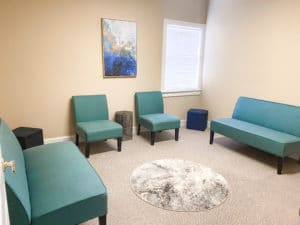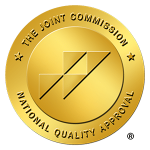LSD, known for profoundly altering perceptions and mental states, can significantly impact brain function and slow cognitive processing. While LSD dependency isn’t widely recognized as highly addictive, tolerance development can elevate the risk of harmful physical effects and potentially life-threatening situations.
Users might encounter various initial symptoms ranging from visual disturbances to intense, often distressing, hallucinations. Anxiety is a common symptom, alongside other signs that suggest LSD misuse. The duration and intensity of these symptoms can vary greatly. Hope Harbor Wellness provides targeted outpatient programs designed to help individuals dealing with LSD addiction in Atlanta, GA.
LSD is often celebrated for its ability to ‘expand consciousness’ but can fundamentally change the brain’s workings. Produced synthetically from a fungus that grows on rye and other grains, LSD is colorless, odorless, and relatively low-cost. However, its misuse disrupts serotonin levels, leading to temporary impairment and lasting psychological challenges, which are clear indicators of LSD abuse.
What is LSD?
Lysergic Acid Diethylamide (LSD) stands as a powerful psychedelic, altering users’ perception, emotion, and sensory experiences dramatically. It triggers deep emotional shifts, modifies thought processes, and introduces major sensory changes.
LSD is listed as a Schedule I controlled substance, highlighting its high abuse potential and lack of sanctioned medical applications, primarily due to its unpredictable effects among different individuals.
Despite regulatory classifications, research and mental health dialogue suggest LSD’s potential in therapeutically addressing conditions like depression and anxiety. Yet, its utilization is fraught with potential for severe physical and psychological outcomes, underscoring the drug’s unpredictable effects.
Common Street Names for LSD
Familiarity with LSD’s various street names is essential for recognizing its misuse. Commonly known street names include:
- Acid
- Battery Acid
- Blotter
- California Sunshine
- Cid
- Doses
- Dots
- L
- Looney Toons
- Lucy
- Lucy in the Sky with Diamonds
- Sugar Cubes
- Superman
- Tabs
- Window Pane
- Yellow Sunshine
Is LSD Addictive?
LSD doesn’t lead to traditional addiction, which involves compulsive drug-seeking behavior and physical dependence. Instead, its danger lies in the development of tolerance, requiring larger doses to achieve the same hallucinogenic effects. These vivid experiences can last up to 12 hours, significantly altering the user’s perception of reality.
Although LSD does not cause physical addiction, its psychological effects can be compelling. Some users may repeatedly seek out the drug for its powerful alteration of senses and emotions. Additionally, LSD use is often accompanied by the consumption of other substances, such as marijuana and alcohol, indicating a pattern of polydrug use.
How Does LSD Abuse Begin?
Dealing with addiction encompasses facing both physical and mental challenges. While LSD is well-known for its powerful mind-altering effects, it doesn’t cause physical dependence. However, it’s important to note that the Drug Enforcement Administration classifies it as a Schedule I substance. This classification indicates that LSD is seen as having a high potential for misuse without any sanctioned medical use.
One of the key characteristics of LSD is that it doesn’t lead to addictive behaviors in the way many other drugs do. This means that those who use LSD typically won’t endure the physical withdrawal symptoms commonly associated with substance dependency. Yet, it’s crucial to understand that regular use of LSD can lead to an increased tolerance. This phenomenon requires individuals to take progressively higher doses to achieve the same profound, euphoric experiences they initially sought. This tolerance can also affect the user’s response to other hallucinogens, such as psilocybin, creating a cross-tolerance effect.
The allure of LSD often lies in its ability to produce extraordinary sensory experiences, which can be enticing for those looking for an escape from emotional discomfort or those in pursuit of intense excitement. This curiosity or desire can lead to experimenting with LSD, potentially opening the door to trying stronger, more dangerous substances. Such a path can carry significant risks, including dangerous drug interactions and lasting impact on one’s mental and physical well-being.
For individuals struggling with substance use or their loved ones, understanding these dynamics is crucial. Recognizing the psychological draw of LSD and the potential consequences of its use can be an important step in seeking help or supporting someone on their journey toward recovery.
What Does LSD Look Like?
LSD presents itself in a variety of forms, making it accessible in several different ways. The most commonly encountered form is acid tablets. However, LSD is not limited to this form; it can also appear in capsules and, less frequently, as a liquid. Acid tablets, which are sometimes called Microdots, might be adorned with unique and eye-catching designs or could be simple, unadorned white tablets.
One aspect of LSD that raises concern is its often playful and colorful design, especially on tablets and blotter paper. These designs can appear misleadingly harmless, potentially attracting a younger audience. Blotter paper is another popular method for distributing LSD. This paper is divided into small squares, known as “tabs,” which are imbued with liquid LSD. Each tab, typically about a quarter of an inch in size, is intended to represent a single dose.
When in liquid form, LSD is a clear and odorless substance, usually kept in tiny vials. In addition to these forms, LSD can also be found in gelatin squares, referred to as Window Panes, or even applied onto sugar cubes, further diversifying the ways it can be disguised.
Despite LSD’s general lack of taste, it may have a slight acidity. However, it is rarely bitter. The market for LSD is fraught with counterfeit products, posing challenges in identifying genuine LSD. To combat this, some turn to an Ehrlich test kit as a means of verification. Yet, even this method isn’t foolproof, as counterfeit substances can be sophisticatedly crafted with ingredients like serotonin pills to simulate LSD’s chemical properties.
How Long Does LSD Stay In Your System?
The journey through an LSD experience is deeply personal, varying widely from profound and transformative insights to challenging and distressing encounters marked by anxiety or fear. This variability extends to the length of time LSD remains present in one’s system, influenced by several factors such as the amount consumed, the individual’s age, body composition, and tolerance to the substance.
Generally, the active phase of an LSD experience, often referred to as a “trip,” spans between 6 to 12 hours, although this can fluctuate greatly depending on personal factors. The half-life of LSD, the period it takes for half of the substance to be processed and cleared from the body, is estimated to range from about three to five hours. This half-life indicates the initial step in understanding the duration LSD will impact an individual, but complete elimination from the body takes longer and depends on various individual health factors and the specifics of the LSD consumed.
For those seeking deeper insights into how long does LSD stay in your system, including the elements that affect its metabolism, additional resources are available. Understanding these dynamics can be crucial for individuals and their loved ones who are navigating the complexities of substance use and its implications on health and well-being.

Side Effects of LSD
The effects of LSD on an individual’s well-being can vary widely, encompassing a range of physical and mental responses. These effects highlight the unpredictable nature of LSD and its potential to influence health in numerous ways:
- Increased heart rate
- Higher blood pressure
- False beliefs or delusions
- Mouth dryness
- Altered visuals and hallucinations
- Shaking or tremors
- Elevated levels of anxiety
- Synesthesia, or the blending of senses, such as seeing sounds in color
- A sense of detachment from oneself or the external world
- Challenges in accurately judging distances
- The emergence of panic attacks
- The occurrence of sudden, unanticipated flashbacks
- Experiences of mood lows or depressive states
- Hallucinogen Persisting Perception Disorder (HPPD), characterized by ongoing hallucinations or visual disruptions long after the expected duration of the drug’s effects
These side effects serve as a reminder of LSD’s complex and potentially unsettling influence on both the mind and body. Understanding these impacts is crucial for anyone affected by substance use, emphasizing the importance of awareness and support in navigating the challenges associated with LSD.
Risk of LSD Use
The journey of those who use LSD may encounter unpredictable and enduring challenges, such as unanticipated flashbacks. These are sudden, vivid hallucinations or changes in mood and perception that can occur out of the blue, long after the last intake of the substance.
One particularly serious condition related to the use of hallucinogens like LSD is hallucinogen persisting perception disorder (HPPD). This disorder can profoundly affect an individual’s sensory and cognitive functions, continuing well after the drug’s immediate effects have faded and potentially disrupting daily life. Additionally, LSD use can lead to long-lasting psychosis, which may manifest as visual disruptions, paranoia, mood swings, and confused thinking.
It’s especially crucial for individuals with a family history of mental health issues, such as psychosis, bipolar disorder, or schizophrenia, to avoid LSD. The risks associated with its use can be significantly higher for these individuals, emphasizing the need for caution and awareness of the potential dangers of LSD on mental health.
Signs of LSD Addiction
While LSD is not known to cause physical dependency, frequent use can lead to an increased tolerance, meaning larger doses are needed to achieve the original effects. This can heighten the risk of adverse psychological effects, including the unsettling experience known as a “bad trip.”
An individual might be struggling with a use disorder related to hallucinogens if you notice patterns such as:
- Using LSD more frequently or in larger amounts than intended.
- An ongoing wish to decrease or manage LSD use, but finding it challenging to do so.
- Spending a lot of time obtaining, using, or recovering from the effects of LSD.
- Feeling a strong desire or urge to use LSD.
- Neglecting responsibilities at work, home, or school due to LSD use.
- Continuing to use LSD even when it clearly harms personal relationships.
- Missing out on important social, work, or recreational activities because of LSD use.
- Taking LSD in dangerous situations.
- Persisting in LSD use despite knowing it’s causing physical or psychological harm.
- Experiencing withdrawal-like symptoms when not using LSD.
The extent of a hallucinogen use disorder is determined by the number of these signs present: exhibiting two to three signs indicates a mild disorder, four to five signs suggest a moderate disorder, and six or more signs indicate a severe disorder. Identifying these signs is crucial for understanding the impact of LSD on one’s life and recognizing the need for support or intervention.
Short-Term Symptoms of Acid Addiction
The peak effects of LSD are usually felt about four hours after taking the drug and tend to diminish, often disappearing completely within 12 hours. For those who have ingested a higher dose, it’s possible to experience unexpected recurrences of the drug’s effects, known as flashbacks, for up to a week afterward.
Some immediate signs of LSD addiction include:
- Fast or irregular heartbeats
- Elevated blood pressure
- Dilated pupils
- Excessive sweating or experiencing chills and goosebumps
- Stomach upset, including cramps and diarrhea
- A reddened face
- Feelings of dizziness and disturbances in vision
These signs typically wane as the body processes and clears the drug. However, continuous or repeated use of LSD can lead to longer-lasting effects, underscoring the importance of recognizing these immediate symptoms as potential signs of LSD use and considering the broader implications of continued substance use.
Long-Term Symptoms of Acid Addiction
The immediate effects of LSD, while intense, typically fade after short-term use. However, the longer-term psychological consequences of regular LSD use can present deeper challenges. Individuals who frequently turn to LSD in search of its mind-altering experiences may encounter difficulties such as depression when not using the substance.
Consistent use of LSD can lead to ongoing feelings of anxiety, paranoia, and confusion that persist long after the effects of the drug should have ceased. There have been instances where individuals face difficulties with short-term memory, display erratic emotional reactions, or exhibit aggression that is out of character for them. Additionally, some users report experiencing a profound sense of existential unease, including an overwhelming fear of death or feeling caught in an inescapable loop of negative thoughts.
These longer-lasting psychological effects highlight the significant risks associated with habitual LSD use, emphasizing the importance of understanding and addressing the potential for deep-seated emotional and mental health issues arising from the drug’s prolonged use.

How To Tell If You Or A Loved One Is Addicted To LSD
Identifying the signs of LSD use disorder is key, as it can bring about significant behavioral and cognitive shifts that may make ceasing drug use more challenging. While LSD is not typically associated with physical dependency, it’s possible for users to develop a pattern of use where they’re unable to stop despite adverse consequences. This condition is medically termed as hallucinogen use disorder, moving away from the stigmatizing term “acid addict.”
Signs that you or someone you care about may be dealing with this issue include:
- Using LSD in larger amounts or over a longer period than was intended.
- Experiencing difficulty in cutting down or controlling LSD use.
- Spending excessive time on activities necessary to obtain, use, or recover from the effects of LSD.
- Feeling a strong desire or urge to use LSD.
- Neglecting responsibilities at work, school, or in the household due to LSD use.
- Continuing to use LSD despite experiencing significant problems due to its use.
- Skipping or reducing participation in important social, work, or recreational activities.
- Using LSD in situations where it’s clearly dangerous, such as driving.
- Keeping up LSD use even when it’s known to worsen or cause health issues.
- Needing more LSD to achieve the desired effect (tolerance).
- Facing withdrawal-like symptoms when LSD use is reduced or stopped.
Although hallucinogen use disorder is more frequently diagnosed among individuals under the age of 30, the outlook for recovery is positive. Many people overcome this disorder with the right support and treatment, highlighting the importance of recognizing these signs early and seeking help.
LSD Overdose
LSD is typically found in quantities ranging from 75 to 150 micrograms per dose. Due to the clandestine nature of LSD manufacture, determining the exact amount of the hallucinogenic substance in any specific batch is challenging without detailed chemical testing. In times of widespread LSD popularity, doses have even reached upwards of 200 micrograms. To put this in context, a single dose of LSD contains significantly less of its active substance compared to common medications like aspirin, which has 3,000 times more of its active ingredient in an average dose.
Despite LSD’s low physical toxicity and the rare occurrence of life-threatening overdoses, the term “overdose” is relevant when someone takes more LSD than they can handle, necessitating medical or psychological care. High doses can lead to intense symptoms, such as:
- Dangerously high body temperatures
- Nausea and vomiting
- Stomach pain and possible gastrointestinal issues
- Breathing difficulties
If you or someone you care about is showing symptoms of LSD addiction, it’s important to take swift action. At Hope Harbor Wellness, we are equipped to provide the support and resources needed to address and alleviate the negative impacts of LSD use. Let us help you steer clear of the repercussions of LSD misuse—consider seeking targeted assistance at our LSD treatment center in Atlanta, GA. With Hope Harbor Wellness, support is readily accessible through a phone call at 678-605-9725 or online contact form. We’re here to guide you away from the risks associated with LSD use and on the path to recovery.
LSD Addiction Treatment at Hope Harbor Wellness
Located in the serene suburbs of Atlanta, Hope Harbor Wellness is your ally in the fight against Acid addiction in Atlanta. Our LSD drug rehab centers, dedicated to holistic recovery, are ideally situated to offer you the support you need.
Our compassionate outpatient program collaborates with top-tier medical LSD detox facilities, ensuring a safe and effective detox process. Once free from addictive substances, you can seamlessly transition into one of our specialized outpatient treatment programs at Hope Harbor Wellness, designed to address substance use disorders:
- Outpatient Rehab: A flexible program tailored to fit into your daily life.
- PHP (Partial Hospitalization Program): Offers a structured yet non-residential approach to treatment.
- IOP (Intensive Outpatient Program): Provides more intensive care while allowing you to maintain daily responsibilities.
- Dual Diagnosis Treatment Program: Caters to those with co-occurring mental health disorders.
Our LSD addiction treatment programs incorporate a variety of interventions:
- MAT (Medication-Assisted Treatment): Utilizes medications to ease withdrawal symptoms and cravings.
- Psychotherapy: Addresses underlying psychological aspects of addiction.
- Group Therapy: Offers peer support and shared learning experiences.
- Individual Counseling: Provides personalized guidance and support.
- Family Therapy: Helps heal and strengthen family relationships.
- Holistic Therapies: Focuses on overall well-being, including physical, emotional, and spiritual health.
- Aftercare: Ensures ongoing support post-treatment.
Embark on your journey from addiction to recovery with Hope Harbor Wellness. Trust in our dedicated team to guide you every step of the way. For more information or to start acid addiction treatment in Atlanta, GA, call our admissions team at 678-605-9725.












